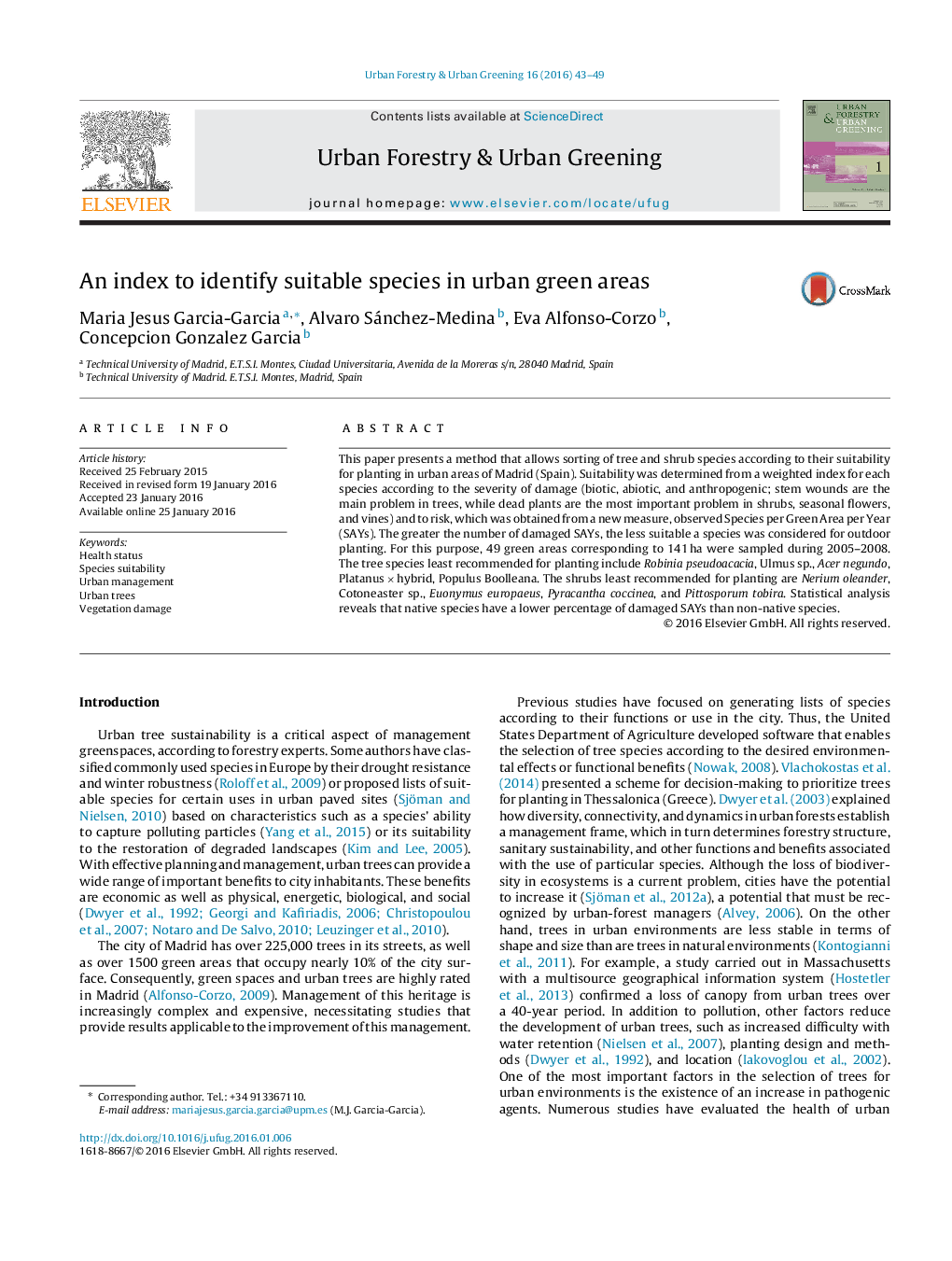| Article ID | Journal | Published Year | Pages | File Type |
|---|---|---|---|---|
| 6549711 | Urban Forestry & Urban Greening | 2016 | 7 Pages |
Abstract
This paper presents a method that allows sorting of tree and shrub species according to their suitability for planting in urban areas of Madrid (Spain). Suitability was determined from a weighted index for each species according to the severity of damage (biotic, abiotic, and anthropogenic; stem wounds are the main problem in trees, while dead plants are the most important problem in shrubs, seasonal flowers, and vines) and to risk, which was obtained from a new measure, observed Species per Green Area per Year (SAYs). The greater the number of damaged SAYs, the less suitable a species was considered for outdoor planting. For this purpose, 49 green areas corresponding to 141 ha were sampled during 2005-2008. The tree species least recommended for planting include Robinia pseudoacacia, Ulmus sp., Acer negundo, Platanus Ã hybrid, Populus Boolleana. The shrubs least recommended for planting are Nerium oleander, Cotoneaster sp., Euonymus europaeus, Pyracantha coccinea, and Pittosporum tobira. Statistical analysis reveals that native species have a lower percentage of damaged SAYs than non-native species.
Related Topics
Life Sciences
Agricultural and Biological Sciences
Forestry
Authors
Maria Jesus Garcia-Garcia, Alvaro Sánchez-Medina, Eva Alfonso-Corzo, Concepcion Gonzalez Garcia,
